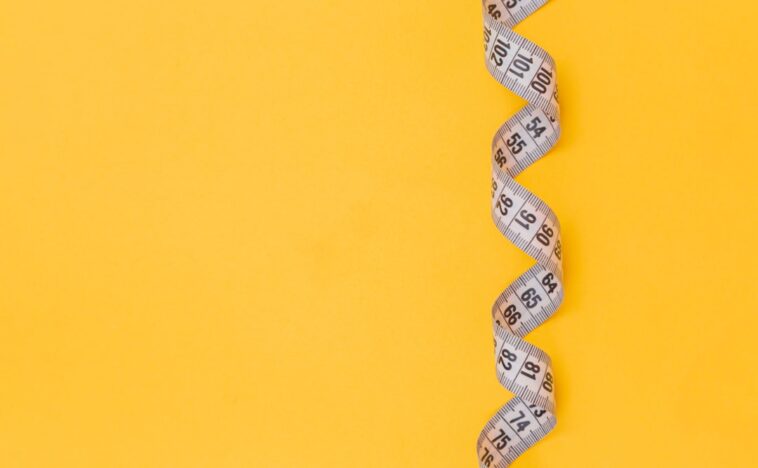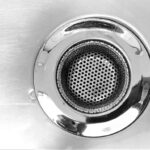Ever wondered if those jeans shrunk in the wash, or if you’re actually carrying a little extra around your midsection? Knowing how to accurately measure your waist can be a really helpful tool for tracking your fitness progress, monitoring your health, or even just making sure you buy clothes that fit properly. As a health and fitness enthusiast, I’m here to guide you through the process, making it simple and straightforward.
Why Measuring Your Waist Matters
Measuring your waist isn’t just about vanity; it’s about health. A larger waist circumference can be an indicator of increased risk for certain health problems, such as heart disease, type 2 diabetes, and even some cancers. Keeping track of your waist size can help you stay informed about your overall health and make positive lifestyle changes if needed. Plus, it’s way more reliable than relying solely on the numbers on your scale!
Think of it this way: muscle weighs more than fat. So, even if the scale isn’t budging, you could be losing inches around your waist while gaining muscle. That’s a win-win! Regularly measuring your waist can provide that extra bit of motivation to keep up with your healthy habits.
What You’ll Need
Luckily, you don’t need any fancy equipment to measure your waist. Here’s what you’ll want to have on hand:
- A flexible measuring tape: The kind used for sewing works perfectly. Avoid using a metal measuring tape like you’d use for construction – it won’t curve properly around your body.
- A mirror: To ensure the measuring tape is level around your waist.
- A quiet space: Somewhere you can focus without distractions.
Step-by-Step Guide to Measuring Your Waist
Now, let’s get down to business! Follow these steps for the most accurate measurement:
- Prepare yourself: Stand tall with your feet shoulder-width apart. Make sure you are wearing light clothing or, ideally, no clothing on your waist. Bulky clothes can add inches to your measurement.
- Find your waist: This is the trickiest part for some people. Your natural waistline is usually the narrowest part of your torso. It’s typically located about halfway between your lowest rib and the top of your hipbone. You can bend to the side to help locate this area – the crease that forms is usually your natural waist.
- Position the measuring tape: Place the measuring tape around your bare abdomen, making sure it’s level all the way around. Use the mirror to check the front and back. The tape should be snug but not so tight that it’s digging into your skin.
- Breathe normally: Exhale gently and take the measurement at the end of your exhale. Don’t suck in your stomach! You want a true measurement, not a wishful one.
- Record the measurement: Look at the measuring tape and note the number where the tape overlaps. Make sure the tape is lying flat and not twisted. Write down the measurement in inches or centimeters, depending on your preference.
- Double-check: It’s always a good idea to measure twice to make sure you get a consistent reading. If the measurements are slightly different, take the average.
Common Mistakes to Avoid
To ensure accuracy, watch out for these common pitfalls:
- Holding your breath: This can artificially decrease your waist size.
- Sucking in your stomach: Again, this gives a false reading.
- Placing the tape too high or too low: Make sure you’re measuring at your natural waistline.
- Twisting or angling the measuring tape: The tape should be level and flat against your skin.
- Wearing bulky clothing: This will add inches to your measurement.
What Does Your Waist Size Mean?
Once you have your waist measurement, you might be wondering what it means in terms of your health. Generally, a waist circumference of more than 35 inches for women and more than 40 inches for men is associated with increased health risks. However, it’s important to remember that these are just general guidelines. Other factors, such as your overall body composition, genetics, and lifestyle, also play a role.
If you’re concerned about your waist size, it’s always a good idea to talk to your doctor. They can assess your overall health and help you develop a plan to achieve your goals.
Tracking Your Progress
Measuring your waist is most helpful when you track your measurements over time. Choose a regular time to measure – perhaps once a week or once a month – and record your results. This will allow you to see if you’re making progress towards your goals. Visualizing your progress can be a powerful motivator!
Consider using a journal, spreadsheet, or a fitness app to keep track of your measurements. Many apps allow you to track your waist size along with other metrics like weight, body fat percentage, and activity levels.
Beyond the Waist: Other Important Measurements
While waist circumference is a valuable indicator of health, it’s not the only measurement that matters. Consider also tracking your weight, hip circumference, and body fat percentage for a more complete picture of your body composition. The waist-to-hip ratio (waist measurement divided by hip measurement) can also be a useful tool for assessing health risks.
Remember, the goal isn’t to achieve a specific number but to improve your overall health and well-being. Focus on making sustainable lifestyle changes, such as eating a healthy diet, getting regular exercise, and managing stress.
Alternatives to Using a Measuring Tape
While a flexible measuring tape is the most accurate way to measure your waist, there are a few alternatives if you don’t have one on hand. You can use a piece of string or ribbon, mark where it overlaps around your waist, and then measure the string with a ruler or yardstick. However, this method is less precise and can be prone to errors. If you’re serious about tracking your waist size, investing in a proper measuring tape is well worth it.
Frequently Asked Questions
How often should I measure my waist?
It depends on your goals. If you’re actively trying to lose weight or improve your fitness, measuring your waist once a week can be helpful. If you’re just monitoring your health, measuring once a month may be sufficient.
Is it better to measure in inches or centimeters?
It doesn’t really matter which unit you use, as long as you’re consistent. Choose whichever unit you’re most comfortable with and stick to it.
Can I measure my waist while wearing clothes?
It’s best to measure your waist against your bare skin for the most accurate reading. If you must wear clothes, opt for light, thin garments that won’t add bulk.
What if I have trouble finding my natural waistline?
Try bending to the side to find the crease in your torso. You can also ask a friend or family member to help you locate it.
My waist size fluctuates throughout the day. When should I measure?
For consistent results, measure your waist at the same time each day, preferably in the morning before you eat or drink anything.
Measuring your waist is a simple yet powerful way to monitor your health and fitness progress. By following these steps and avoiding common mistakes, you can get an accurate measurement and track your progress over time. Remember, the goal is to use this information to make informed decisions about your health and well-being, not to obsess over the numbers. So grab that measuring tape, take a deep breath, and start tracking your journey to a healthier you!



GIPHY App Key not set. Please check settings